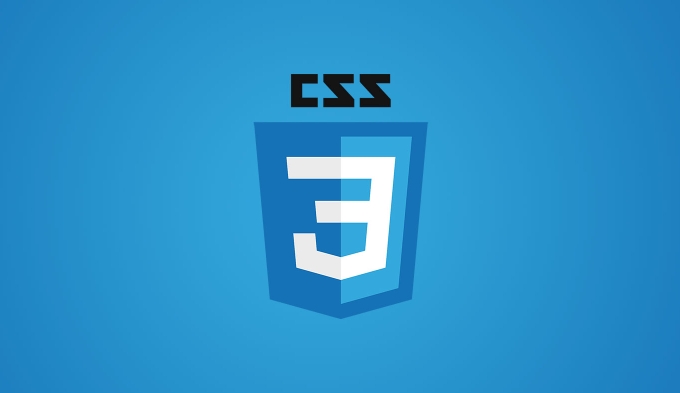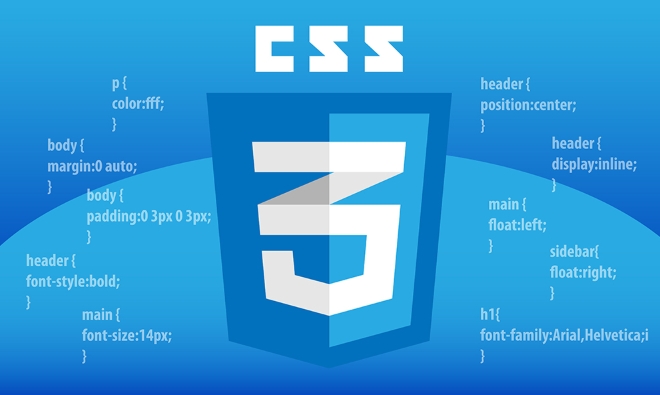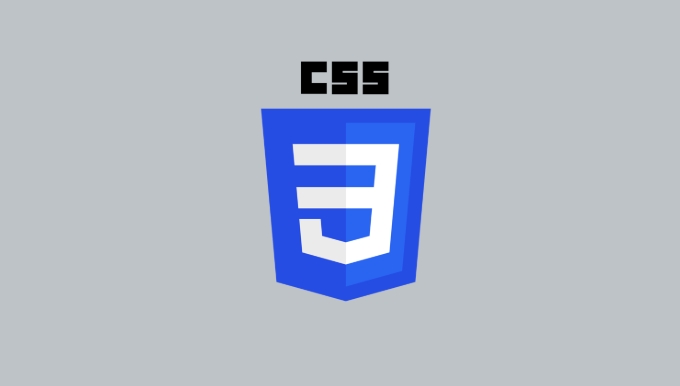The core method to achieve sticky heads or tails in web pages is to use the position: sticky property of CSS. 1. position: sticky is a combination of relative positioning and fixed positioning. It needs to be used in conjunction with top, bottom, left or right, and the parent container cannot have restricted attributes such as overflow: hidden or transform. 2. When making sticky footer, bottom: 0 is usually set and JavaScript or media queries may be required to control it not float when content is insufficient. 3. When using it, be careful to avoid parent container restrictions, reasonably set the z-index control hierarchy, ensure browser compatibility, and correctly handle layout conflicts between multiple sticky elements.

When making a web page, you may want certain elements such as the navigation bar or the bottom information to be displayed on the screen, no matter where the user scrolls. This is what is called "sticky" head or tail. It is actually not difficult to implement with CSS. The key is to understand how to use position: sticky and cooperate with other attributes.

1. Basic syntax and principles
position: sticky is the core of achieving sticky positioning. It's kind of like a combination of relative and fixed : when the element scrolls to a specific position, it "sticks" on the screen until it leaves the viewing area.
But a few things to note:

- It must be used with one of
top,bottom,leftorright, otherwise it will not take effect. - The parent container cannot have properties such as
overflow: hiddenortransformthat restrict its behavior. - It only works when scrolling, not really pinned on the entire page.
For example, if you want a header to be fixed on the top when scrolling, you can write it like this:
.header {
position: sticky;
top: 0;
}As long as the page scrolls, the header will "stuck" when it reaches the top, and the page will not disappear even if it continues to scroll.

2. Tips for making sticky footer
Compared to the head, footer is a little more complicated to "stick" at the bottom. Because most of the time we want it to appear after the content, but not float when the content is not long enough, and start to fix it when the content is long enough.
A common practice is to judge the content height, and footer becomes sticky when it exceeds one screen:
.footer {
position: sticky;
bottom: 0;
} But this is not enough. Make sure the footer doesn't stick to the bottom of the screen at the beginning, and it's best to let it appear behind the content naturally. You can set its position to relative and switch to sticky dynamically via JavaScript, or use media query control.
Also, if you just want footer to always be at the bottom of the page (not when scrolling), it's better to use position: fixed , but this may block the content and require additional processing spacing.
3. Avoid common pitfalls
Although position: sticky is very convenient, it is easy to get stuck in actual use:
- Parent container restrictions : sticky will be invalid if the parent element uses
overflow: hidden. At this time, you can consider adjusting the structure and moving the sticky element out of the container. - z-index control level : multiple sticky elements may block each other, remember to set priority with
z-index. - Compatibility issues : Modern browsers support it, but if you are still maintaining old projects, you still have to check the compatibility.
To give a simple scenario: you are making a page with a scrolling table, and the header and operation buttons need sticky. At this time, the two sticky elements may be misaligned. You need to set their top values separately to ensure that they do not overlap.
The final reminder
The most important thing to implement sticky header or footer is to understand the behavioral boundaries of position: sticky . It doesn't completely get out of the document stream like fixed , but instead decides when to "stick" based on the scrolling context. Therefore, the layout structure and parent style will affect the effect.
Basically that's it. It doesn't seem complicated, but when it's really used in a project, the details are easily overlooked.
The above is the detailed content of How to create a sticky header or footer with CSS?. For more information, please follow other related articles on the PHP Chinese website!

Hot AI Tools

Undress AI Tool
Undress images for free

Undresser.AI Undress
AI-powered app for creating realistic nude photos

AI Clothes Remover
Online AI tool for removing clothes from photos.

Clothoff.io
AI clothes remover

Video Face Swap
Swap faces in any video effortlessly with our completely free AI face swap tool!

Hot Article

Hot Tools

Notepad++7.3.1
Easy-to-use and free code editor

SublimeText3 Chinese version
Chinese version, very easy to use

Zend Studio 13.0.1
Powerful PHP integrated development environment

Dreamweaver CS6
Visual web development tools

SublimeText3 Mac version
God-level code editing software (SublimeText3)

Hot Topics
 What is 'render-blocking CSS'?
Jun 24, 2025 am 12:42 AM
What is 'render-blocking CSS'?
Jun 24, 2025 am 12:42 AM
CSS blocks page rendering because browsers view inline and external CSS as key resources by default, especially with imported stylesheets, header large amounts of inline CSS, and unoptimized media query styles. 1. Extract critical CSS and embed it into HTML; 2. Delay loading non-critical CSS through JavaScript; 3. Use media attributes to optimize loading such as print styles; 4. Compress and merge CSS to reduce requests. It is recommended to use tools to extract key CSS, combine rel="preload" asynchronous loading, and use media delayed loading reasonably to avoid excessive splitting and complex script control.
 External vs. Internal CSS: What's the Best Approach?
Jun 20, 2025 am 12:45 AM
External vs. Internal CSS: What's the Best Approach?
Jun 20, 2025 am 12:45 AM
ThebestapproachforCSSdependsontheproject'sspecificneeds.Forlargerprojects,externalCSSisbetterduetomaintainabilityandreusability;forsmallerprojectsorsingle-pageapplications,internalCSSmightbemoresuitable.It'scrucialtobalanceprojectsize,performanceneed
 Does my CSS must be on lower case?
Jun 19, 2025 am 12:29 AM
Does my CSS must be on lower case?
Jun 19, 2025 am 12:29 AM
No,CSSdoesnothavetobeinlowercase.However,usinglowercaseisrecommendedfor:1)Consistencyandreadability,2)Avoidingerrorsinrelatedtechnologies,3)Potentialperformancebenefits,and4)Improvedcollaborationwithinteams.
 CSS Case Sensitivity: Understanding What Matters
Jun 20, 2025 am 12:09 AM
CSS Case Sensitivity: Understanding What Matters
Jun 20, 2025 am 12:09 AM
CSSismostlycase-insensitive,butURLsandfontfamilynamesarecase-sensitive.1)Propertiesandvalueslikecolor:red;arenotcase-sensitive.2)URLsmustmatchtheserver'scase,e.g.,/images/Logo.png.3)Fontfamilynameslike'OpenSans'mustbeexact.
 What is Autoprefixer and how does it work?
Jul 02, 2025 am 01:15 AM
What is Autoprefixer and how does it work?
Jul 02, 2025 am 01:15 AM
Autoprefixer is a tool that automatically adds vendor prefixes to CSS attributes based on the target browser scope. 1. It solves the problem of manually maintaining prefixes with errors; 2. Work through the PostCSS plug-in form, parse CSS, analyze attributes that need to be prefixed, and generate code according to configuration; 3. The usage steps include installing plug-ins, setting browserslist, and enabling them in the build process; 4. Notes include not manually adding prefixes, keeping configuration updates, prefixes not all attributes, and it is recommended to use them with the preprocessor.
 What are CSS counters?
Jun 19, 2025 am 12:34 AM
What are CSS counters?
Jun 19, 2025 am 12:34 AM
CSScounterscanautomaticallynumbersectionsandlists.1)Usecounter-resettoinitialize,counter-incrementtoincrease,andcounter()orcounters()todisplayvalues.2)CombinewithJavaScriptfordynamiccontenttoensureaccurateupdates.
 CSS: When Does Case Matter (and When Doesn't)?
Jun 19, 2025 am 12:27 AM
CSS: When Does Case Matter (and When Doesn't)?
Jun 19, 2025 am 12:27 AM
In CSS, selector and attribute names are case-sensitive, while values, named colors, URLs, and custom attributes are case-sensitive. 1. The selector and attribute names are case-insensitive, such as background-color and background-Color are the same. 2. The hexadecimal color in the value is case-sensitive, but the named color is case-sensitive, such as red and Red is invalid. 3. URLs are case sensitive and may cause file loading problems. 4. Custom properties (variables) are case sensitive, and you need to pay attention to the consistency of case when using them.
 What is the conic-gradient() function?
Jul 01, 2025 am 01:16 AM
What is the conic-gradient() function?
Jul 01, 2025 am 01:16 AM
Theconic-gradient()functioninCSScreatescirculargradientsthatrotatecolorstopsaroundacentralpoint.1.Itisidealforpiecharts,progressindicators,colorwheels,anddecorativebackgrounds.2.Itworksbydefiningcolorstopsatspecificangles,optionallystartingfromadefin






